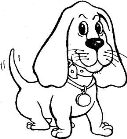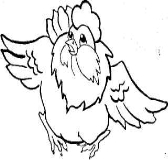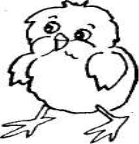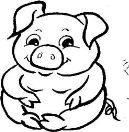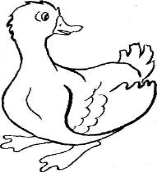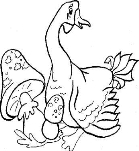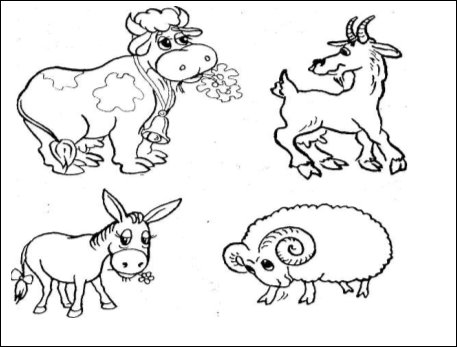Урок «Звірі» розділу навчальної програми «Тематика ситуативного спілкування».
Animals
Level – A1 elementary
Tetiana Meleshko
school of Dmytrivka
Aim.
Educational: to widen pupils' outlook; to develop pupils' imagination;
Language: to revise the vocabulary related to the topic; to incorporate group work; to develop pupils' phonetic skills;
Practical: to form habits of communicating according to the given topic; to develop pupils' speaking, reading, listening and writing skills; to stimulate learners' creative thinking on the subject and working independently and in groups;
Developing: to develop positive attitude towards nature and animals; to make pupils think seriously about their responsibility for nature.
Equipment: a text for developing reading comprehension, cards for writing sentences, a dialogue on the blackboard, pictures of the animals, verses on computer.
Time: 40 minutes
Procedure
I. Greeting.
Good morning, pupils! Sit down, please!
Who is absent today? Who is on duty today?
Our today’s theme is “ Animals”
II. Warm – up.
T. Look at the pictures and say, what animal do you see.


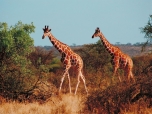


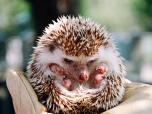



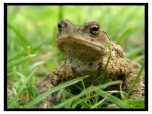
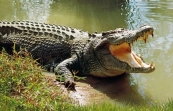

T. Play a game. Match the word to the picture. (Technology. Read and match.)
|
|
|
|
|
|
|
|
|
|
||
a dog a cock a hen a horse
a goat a donkey a cow a goose
а ріg a sheep a duck a chick
III. Main part
T. Read the sentences about the animals using the pictures of animals.
(Technology. Guess and write.)
I see a  . This animal is very clever. It is a
. This animal is very clever. It is a  . It is grey and has got a long tail. It lives in the forest. In the zoo there are two
. It is grey and has got a long tail. It lives in the forest. In the zoo there are two ![]()
![]() . They like to run. A
. They like to run. A ![]() has got a big head. Its heck is short. This animal lives in the forest and likes to sleep. These
has got a big head. Its heck is short. This animal lives in the forest and likes to sleep. These  have got long legs and a long neck. They are wild animals. An
have got long legs and a long neck. They are wild animals. An  lives in Africa. We can see it in the zoo. This
lives in Africa. We can see it in the zoo. This  lives on the farm. But he doesn’t like to fly. A
lives on the farm. But he doesn’t like to fly. A ![]() runs well. It lives on the farm too. A
runs well. It lives on the farm too. A  likes to eat grass. It can be brown, black or white. We see a pink
likes to eat grass. It can be brown, black or white. We see a pink  . It doesn’t live in the forest.
. It doesn’t live in the forest.
IV Morning drill.
I can run. https://www.youtube.com/watch?v=QKn5H1cekyo
T. Watch, listen and do the same. (Technology. Listen and mime.)
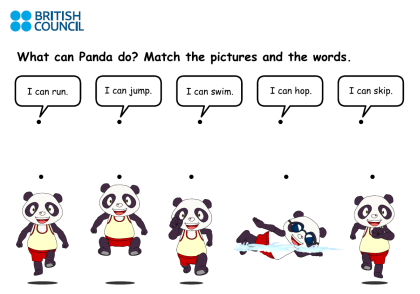
V. Story-telling
T. Tell about your favourite animal completing the sentences.
It lives in……….. .
It is……………. .
It has got………. .
It eats……….. .
1) It lives in Africa. It is orange and white. It has got a very long neck, a small head and a tail. It eats leaves and fruit.
2) It is brown or black, grey or white. It has got long legs, a long neck and a tail. It eats grass and corn.
3) It lives in forests. It is brown. It is fat. It has got a lot of hair on his body. It has got a short tail. It likes honey.
4) It lives in rivers in hot countries. It is green. It is ugly. It has got a big mouth. It has got four short legs and a long tail. It eats fish and meat.
5) It lives on farms or in houses. It’s black or white, grey or red. It has got short or long ears. It likes bones
VI. Listening
T. Listen to the verse and repeat after the voice
I have a parrot, a duck and a bear.
I’ve got a swan, a cow, a hare.
I’ve got a snake.
You can touch.
I like my toys very much.
T. Fill in the missing letters. (Technology. Copy and fill in.)
I have a p…rr…t, a du…k and a b…ar.
I’ve got a sw…n, a c…w, a ha…e.
I’ve got a s…a…e.
You can t…u…h.
I like my to…s very much.
VII. Group work
T. Make up a dialogue using the sentences (on the blackboard)
- Do you like animals?
- Yes, I like animals very much.
- What is your favourite domestic animal?
- My favourite domestic animal is … .
- What is your favourite wild animal?
- My favourite wild animal is … .
T. Make up the sentences.
Technology. Connect and write.
|
A wolf |
lives
|
in the water |
|
A crocodile |
in the tree |
|
|
A pig |
in the forest |
|
|
A squirrel |
on the farm |
|
|
A cat |
in the house |
VIII. Writing
T. Listen to the verse and repeat after the voice
Where do crows sleep?
They sleep in the tree.
Where do whales sleep?
They sleep in the sea.
Where do bears sleep?
They sleep in the wood.
They are very big.
They are very good.
T. Fill in the missing words and write down the verse into your copybooks.
(Technology. Copy and fill in.)
Where do … sleep?
They sleep in the … .
Where do … sleep?
They sleep in the … .
Where do … sleep?
They sleep in the … .
They are very … .
They are very … .
IX. Summing up
T. Tell, how do these animals look like?


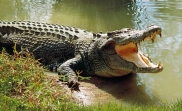
T. Complete the sentences. Tell, what animal do you like. Say, what animal do you want to see in the zoo.
I like……. .
I want to see…….. .
X. HOME ASSIGNMENT
T. Make a dialogue about visiting the zoo.

про публікацію авторської розробки
Додати розробку


